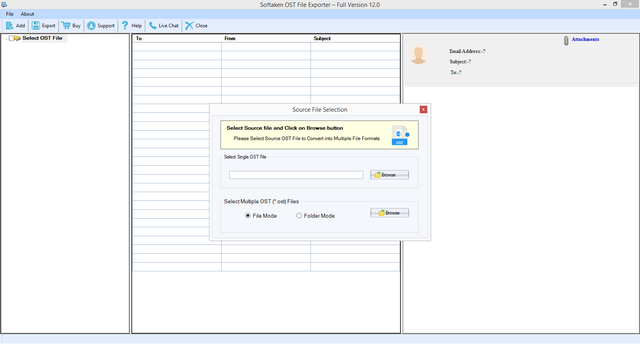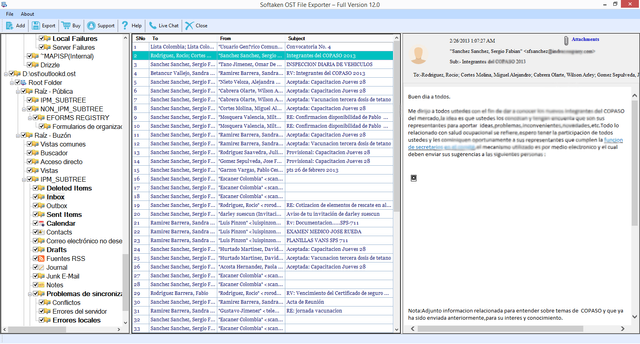Introduction-
Upgrading a large number of OST files into Outlook PST can be a daunting task, especially for individuals and businesses dealing with extensive email data. OST files are created when using Microsoft Outlook in Cached Exchange Mode or with IMAP accounts. PST files, on the other hand, are widely used to store Outlook data, including emails, contacts, calendars, and more. This blog will guide you through the process of efficiently upgrading multiple OST files into Outlook PST, ensuring a seamless transition and minimal data loss.
What is OST and PST file Format?
OST File Format:
An OST file is created and used by Microsoft Outlook when it is configured to work in Cached Exchange Mode. The purpose of an OST file is to allow offline access to mailbox data when the computer is not connected to the Exchange server. The OST file stores emails, calendar items, contacts, tasks, and other mailbox data.
PST File Format:
A PST file is a personal storage file used by Microsoft Outlook to store email messages, contacts, calendar items, and other data. It is commonly used for POP3, IMAP, and web-based email accounts such as Outlook.com, Gmail, or Yahoo Mail. The PST file can be used to back up or archive Outlook data or to transfer data between different installations of Outlook.
Why Convert Bulk of OST file into Outlook PST file?
Advanced Search and Organization:
Outlook provides powerful search and organization features that are often absent or limited in OST files. By upgrading OST files to PST format, users gain access to Outlook's advanced search capabilities, including keyword search, sender/recipient filtering, date range search, and more. This allows for quick retrieval of specific emails or attachments, saving valuable time and effort. Moreover, PST files allow users to organize their emails into custom folders, and categorize them.
Enhanced Security and Data Integrity:
OST files store mailbox data locally, making them vulnerable to various risks such as hardware failures, malware attacks, or accidental deletion. On the other hand, PST files can be protected with password encryption, adding an extra layer of security to sensitive email data. Additionally, upgrading OST files to PST format ensures data integrity, as the conversion process often resolves any inconsistencies or corruptions present in the OST files, resulting in a clean and optimized PST file.
Seamless Data Accessibility:
OST files are an offline cache of mailbox data created by Microsoft Exchange Server. They allow users to access their email data even without an active internet connection. However, upgrading these OST files to PST format provides greater flexibility and convenience. PST files are standalone and independent, enabling users to access their email data without any server dependency. This ensures seamless accessibility to emails, contacts, calendars, and other mailbox items, regardless of the availability of the Exchange server.
Data Portability and Backup:
One of the significant advantages of converting OST files to PST format is the enhanced data portability it offers. PST files can be easily exported, imported, and shared across different systems and email clients. This portability ensures that users can access their email data from various devices and platforms, promoting productivity and collaboration. Additionally, PST files can serve as a reliable backup mechanism, enabling users to safeguard their crucial email data in case of server failures, corruption, or accidental deletions.
Simplified Migration:
In scenarios where organizations switch their email systems or migrate to different servers, upgrading OST files to PST format simplifies the migration process. Since PST files are widely supported across different email clients and platforms, the transition becomes seamless and hassle-free. It eliminates the need for complex data extraction from OST files and minimizes the risk of data loss during the migration process.
Export Large Number of OST file into Outlook PST file Expert Method
The Softaken OST to PST Converter Tool does more than just convert OST file to Outlook file. It allows you to convert OST files into a variety of different formats, including EML, MBOX, HTML, and vCard. This flexibility enables users to select the file format that best meets their requirements, whether for migration, archiving, or compatibility with other email clients and applications. It converts OST file into PST file without changing any data like emails, contacts, notes, messages, notes, events etc.
Professional steps to convert OST file into PST file


Conclusion
convert large number of OST files to Outlook PST format may appear difficult, but by following the steps given in this article, you may simplify the process and ensure a successful conversion. Before you begin, make a backup of your original OST files, and consider using dedicated OST to PST conversion software for efficiency when dealing with a large number of files. You'll be able to smoothly migrate your data and continue using Microsoft Outlook with these instructions.